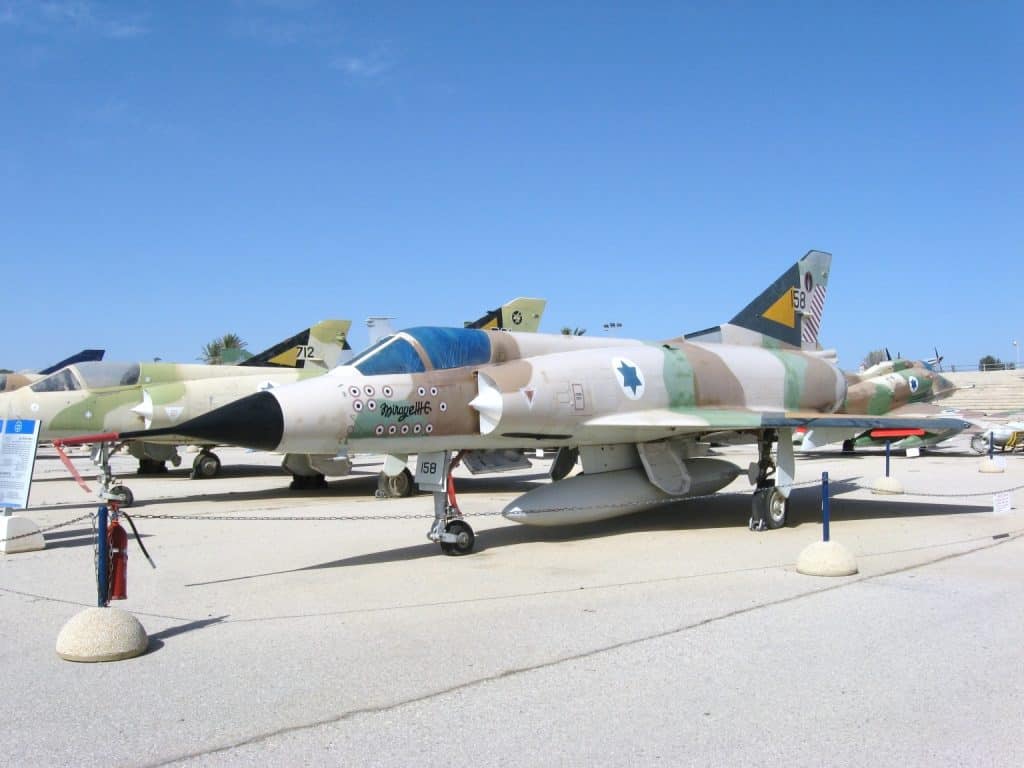In June 1967, the world witnessed one of the most significant and consequential conflicts in modern history: the Six-Day War. Fought between Israel and a coalition of Arab states, namely Egypt, Jordan, and Syria, this intense and swift war had far-reaching implications that continue to shape the geopolitics of the Middle East even today.

(Credit: Government Press Office (Israel) CC BY-SA 4.0)
Historical Background:
The seeds of the Six-Day War were sown in the tense atmosphere that had prevailed in the region since establishing the State of Israel in 1948. Rivalries, territorial disputes, and a series of border incidents created a volatile situation, eventually escalating into full-scale conflict.

(Credit: Government Press Office (Israel) CC BY-SA 4.0)
The Main Actors:
Israel, a relatively young nation surrounded by hostile neighbors, faced mounting threats and increasing military build-up along its borders. Arab states, unified by their opposition to Israel’s existence, sought to reclaim territories lost in the 1948 Arab-Israeli War.
The course of the Conflict:
- Preemptive Strikes: On June 5, 1967, Israel launched a surprise attack on Egyptian airfields, decimating the Egyptian Air Force and gaining air superiority within hours. This preemptive strike was a critical factor in Israel’s subsequent victories.
- Sinai Peninsula: Taking advantage of their air superiority, Israeli forces swiftly advanced into the Sinai Peninsula. In just six days, they overwhelmed Egyptian defenses, capturing the entire Sinai Peninsula and dealing a severe blow to Egypt’s military capabilities.
- West Bank and Jerusalem: Simultaneously, Israeli forces launched an offensive against Jordan, capturing the West Bank, including East Jerusalem and the revered Old City. This conquest resulted in Israel gaining control over the Western Wall and the historic Jewish Quarter.
- Golan Heights: In the north, Israeli forces repelled Syrian attacks and eventually gained control of the strategically significant Golan Heights, commanding a vantage point over the Galilee region.
The Wars of the State of Israel

(Credit: Oren Rozen CC BY-SA 3.0)
Aftermath and Impact:
- Borders Redrawn: The war dramatically altered the territorial landscape of the region. Israel gained control of the Sinai Peninsula, the West Bank, the Gaza Strip, East Jerusalem, and the Golan Heights.
- Palestinian Question: The war also led to an influx of Palestinian refugees, adding to an already complex issue. The West Bank and Gaza Strip occupation created long-standing challenges and tensions regarding Palestinian statehood and self-determination.
- Regional Dynamics: The Six-Day War reshaped regional alliances. Humiliated by the loss, Egypt sought to regain its pride and territory, eventually leading to the 1973 Yom Kippur War. Peace treaties between Israel and Egypt (1979) and Jordan (1994) were later signed, but the conflict with Syria remains unresolved.
- International Implications: The war had broader implications on the international stage. It increased Soviet influence in the region and led to the adoption of United Nations Security Council Resolution 242, which called for the withdrawal of Israeli forces from occupied territories and recognition of the right to live within secure and recognized boundaries.
Conclusion
The Six-Day War was a transformative event in the history of the Middle East. Its rapid and decisive outcome had profound implications for Israel, the Arab states, and the international community. The war reshaped borders, created new challenges, and fueled long-standing conflicts that persist today. Understanding this conflict’s causes, events, and consequences is crucial to comprehending the complex dynamics and ongoing tensions in the Middle East.

(Credit: Bukvoed – CC BY 2.5)
By June 9th, Israel reached the plateau to capture the area from Syria; and the UN Security Council achieved armistice on all sides. By the end of the Six-Day War, Israel defeated Egypt, Jordan, and Syria and occupied the Sinai Peninsula, the Gaza Strip; the West Bank; East Jerusalem; and the Golan Heights. In conclusion, victory is attributed to more efficient military leadership, better planning, and intelligence. While Israel won this war, the conflict would resume in another six years.

